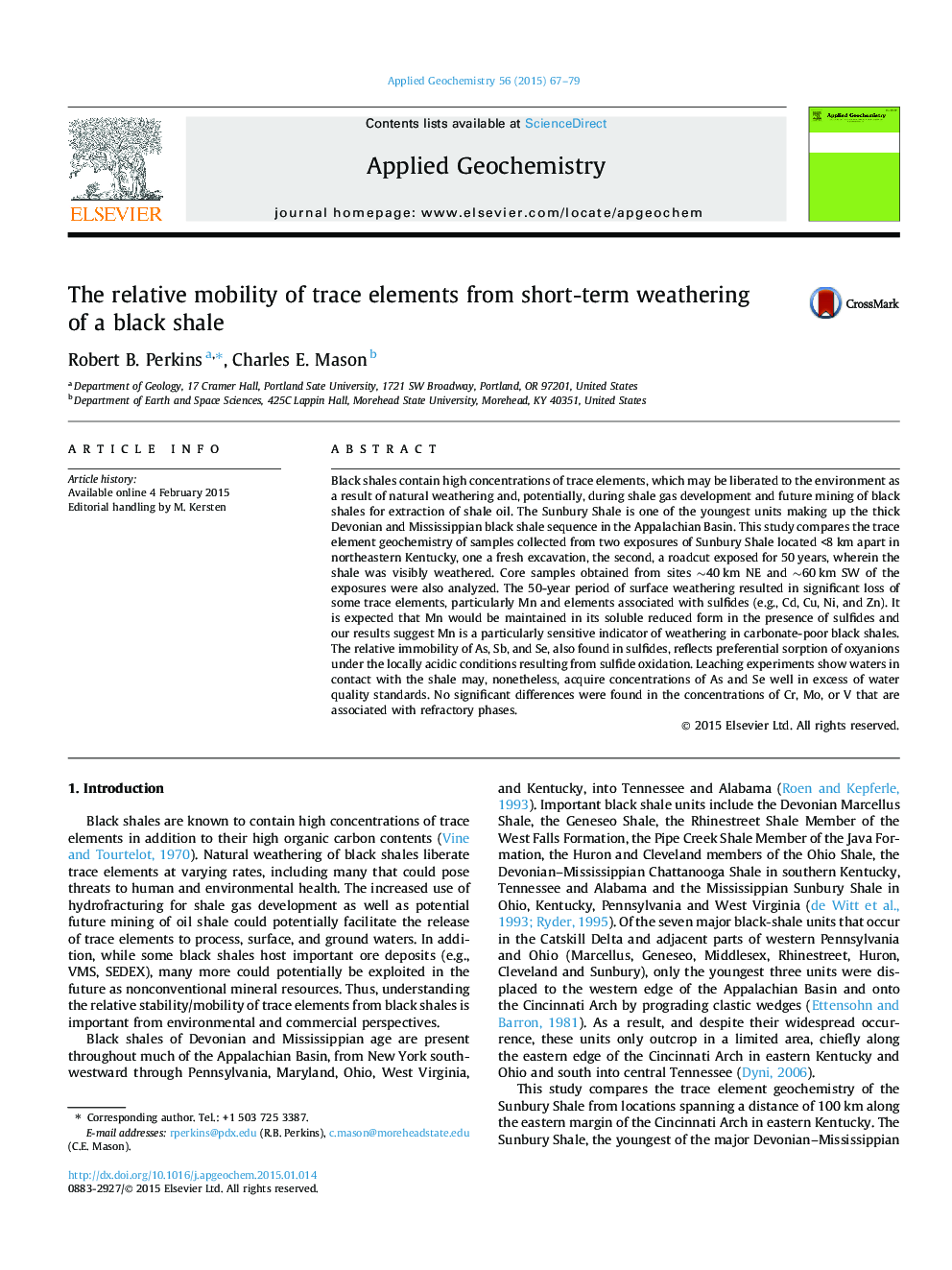| Article ID | Journal | Published Year | Pages | File Type |
|---|---|---|---|---|
| 4435704 | Applied Geochemistry | 2015 | 13 Pages |
•We measure trace element contents in weathered and unweathered Sunbury Shale samples.•As, Cd, Mo, Ni, Sb, Tl, U, V, and Zn contents are enriched >5× crustal or world shale average values.•As, Cu, P, and Pb contents increase and Ba contents decrease southwesterly over a 100-km distance.•Cd, Co, Cu, Mn, Ni, and Zn are the most mobile elements during short-term weathering.•Sulfide oxidation accounts for loss of Cd, Co, Cu, Ni, and Zn. As, Sb, and Se are retained by sorption.
Black shales contain high concentrations of trace elements, which may be liberated to the environment as a result of natural weathering and, potentially, during shale gas development and future mining of black shales for extraction of shale oil. The Sunbury Shale is one of the youngest units making up the thick Devonian and Mississippian black shale sequence in the Appalachian Basin. This study compares the trace element geochemistry of samples collected from two exposures of Sunbury Shale located <8 km apart in northeastern Kentucky, one a fresh excavation, the second, a roadcut exposed for 50 years, wherein the shale was visibly weathered. Core samples obtained from sites ∼40 km NE and ∼60 km SW of the exposures were also analyzed. The 50-year period of surface weathering resulted in significant loss of some trace elements, particularly Mn and elements associated with sulfides (e.g., Cd, Cu, Ni, and Zn). It is expected that Mn would be maintained in its soluble reduced form in the presence of sulfides and our results suggest Mn is a particularly sensitive indicator of weathering in carbonate-poor black shales. The relative immobility of As, Sb, and Se, also found in sulfides, reflects preferential sorption of oxyanions under the locally acidic conditions resulting from sulfide oxidation. Leaching experiments show waters in contact with the shale may, nonetheless, acquire concentrations of As and Se well in excess of water quality standards. No significant differences were found in the concentrations of Cr, Mo, or V that are associated with refractory phases.
